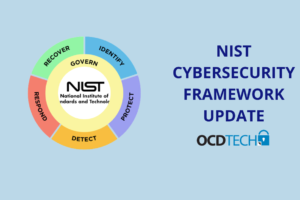You’re sorting through your inbox and notice an odd message. It could be from a strange address, with a subject line that sounds urgent or vague. Your curiosity is piqued—but then comes the concern:
Can just opening an email be dangerous?
This question comes up frequently, and for good reason. Phishing scams, malware, and social engineering attacks are getting more advanced. It’s normal to worry that just opening a message could put your system or personal data at risk.
In this article, we break down the facts, dispel myths, and help you understand what really happens when you open an email.
Is Opening an Email Dangerous in 2025?
In most cases, opening an email is not usually dangerous. This is true if you use a secure and updated email client like Gmail, Outlook, or Apple Mail. These platforms are designed with built-in protections that:
- Block scripts from running
- Prevent automatic downloads
- Filter malicious attachments
- Detect known phishing campaigns
Reading the email is usually safe. Just avoid clicking on links, downloading attachments, or enabling external content.
However, that doesn’t mean there’s zero danger. Older software, compromised systems, or overly curious behavior can still leave you vulnerable.
Can You Get a Virus from Opening an Email?
Under normal conditions, you cannot get a computer virus by opening an email. But when you start using the email, like clicking on links or downloading files, you may face many threats, including:
- Malware
- Spyware
- Ransomware
- Keyloggers
- Trojans
This is especially true for attachments in formats like .exe, .zip, .docm, or even PDFs that can contain malicious code.
If you’re asking, “Is it safe to open spam email?”—the answer is usually yes. Just don’t click anything or download files. But spam emails can still be used to:
- Confirm your email is active
- Track your device using image pixels
- Set up follow-up phishing attempts
What Happens If You Open a Phishing Email?
Phishing emails are designed to deceive, not necessarily to infect. Just opening one won’t automatically hack your system, but it does increase the risk of human error.
Phishing tactics may involve:
- Fake invoices asking for payment
- Links to cloned login pages (bank, email, cloud services)
- Requests for password resets
- Messages from someone impersonating your CEO or coworker
Once you interact—by clicking a link or entering information—you could be handing over sensitive credentials to cybercriminals.
Can You Get Hacked Just by Opening an Email?
Technically, it is very rare to get hacked by simply opening an email, especially with modern protections. But there are edge cases where it could happen:
- Image tracking: Opening an email with tracking pixels could alert the attacker that your inbox is active, leading to more targeted attacks.
- Zero-day vulnerabilities: If your email client or operating system is not patched, attackers could exploit unknown bugs.
- Older email clients: Legacy systems may automatically open attachments or run scripts that newer clients would block.
While these cases are not common, they highlight the importance of keeping your software updated and security settings properly configured.
Real Risks of Opening Suspicious Emails
There’s often a fine line between harmless curiosity and risky behavior. Opening an email becomes dangerous when:
- You click a link to a fake website
- You download and open a malicious file
- You reply with sensitive information
- You follow instructions from a scammer impersonating someone you trust
Each of these actions can lead to real consequences: identity theft, financial loss, unauthorized access to company systems, and reputational damage.
This is why many cybersecurity professionals say: It’s not the email that hacks you—it’s your actions after opening it.
Common Email Threats to Watch For
If you accidentally opened a spam email on your phone or computer, here’s what to look out for:
- Unfamiliar sender addresses
- Urgent or alarming subject lines
- Attachments you didn’t expect
- Links that don’t match the sender’s identity
- Generic greetings
What happens if you open a spam email? It depends on whether you click, download, or interact with it. Just opening it usually isn’t harmful, but it’s what you do next that counts.
What to Do If You Opened a Suspicious Email
Even if you’ve opened a suspicious or phishing email, you can still avoid major damage by acting quickly:
- Avoid clicking on any links or attachments if you haven’t already.
- Mark the email as spam or phishing in your email app.
- Delete the message immediately from your inbox and trash folder.
- Run a full antivirus or antimalware scan.
- Change your passwords if you entered credentials.
- Enable multi-factor authentication (MFA) on important accounts.
- Report the incident to your IT or security team if applicable.
Tips to Stay Safe When Reading Emails
To make sure you’re protected before the next suspicious email lands in your inbox, follow these best practices:
- Keep your software up to date
- Disable automatic loading of images in emails
- Use antivirus and antimalware software
- Never trust unexpected attachments or links
- Educate your team or family on phishing and email fraud
Final Thoughts: Should You Be Worried?
Can just opening an email be dangerous? In today’s digital landscape, the answer is rarely, but not never.
Modern email clients do a great job of blocking dangerous content. But attackers rely on human error, not just technology. Approach every unexpected email with caution, especially those containing attachments or links.
Think of opening an email like opening your front door. Simply doing so doesn’t put you in danger—but what you do next determines what comes in.
Stop the Click Before It Happens
The biggest risk isn’t the email—it’s how people respond to it. Even the most secure infrastructure can be compromised by one wrong click.
At OCD Tech, we help businesses stay ahead of phishing attacks through tailored social engineering assessments and phishing simulation and training programs. Our experts create realistic scenarios to test your team, identify weak points, and build lasting cybersecurity awareness.
Let’s talk about how we can strengthen your human firewall.



